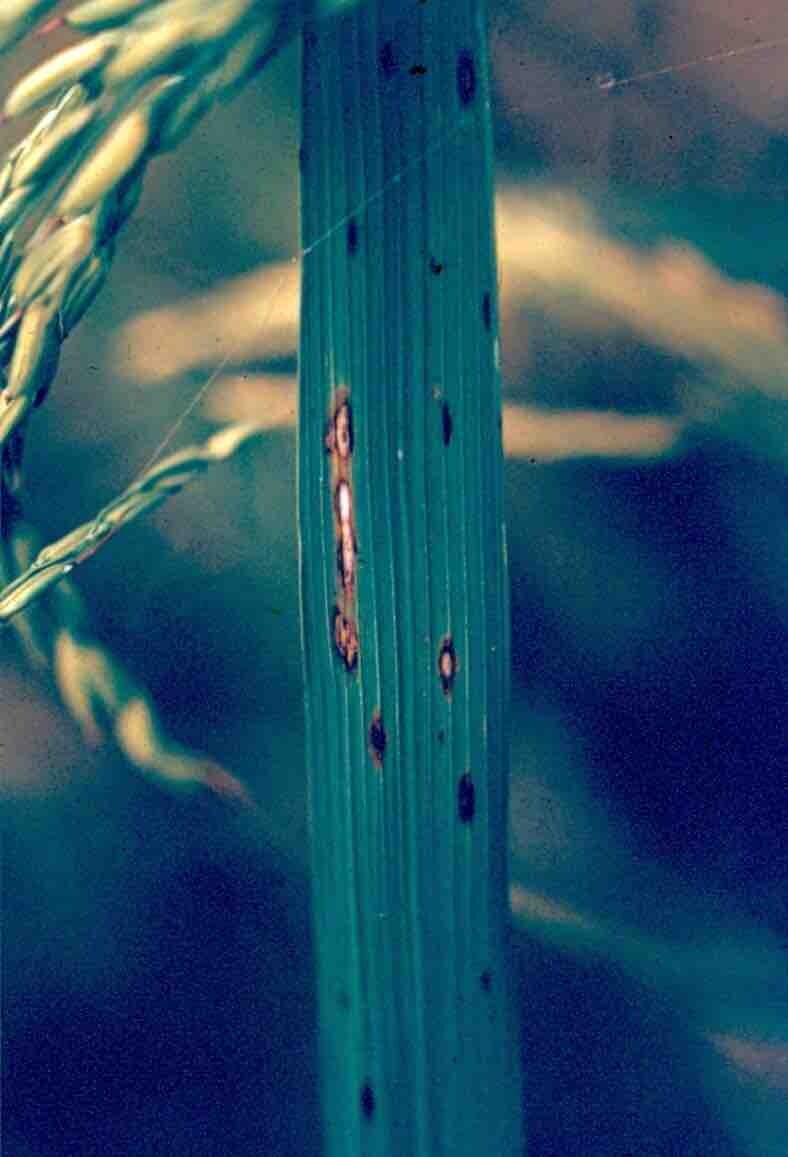Rice blast
Rice
The name of the disease is derived from the visual symptoms it causes to rice plants. When conditions are favorable, plant tissues become undergo necrosis and heavily infected leaves will appear burnt from a distance.
Rice blast can cause lesions on leaves, leaf collars, nods, stems, panicles and grains. In about 90% of the time, panicles and grains exhibit visual symptoms, while leaf sheets and roots do not show symptoms.
Initially, purple spots are formed on young leaves. With time, the spots become spindle-shaped. Large lesions usually develop a diamond shape with grayish center and brown margin. Infection on the necks can be fatal; it can lead to a condition called neck blast in which the entire panicle might fall over.
Rice blast disease is the most devastating plant diseases in rice. The damages it can inflict and potential yield losses are so great that rice blast disease has been ranked among the most important plant diseases in the world. Rice blast is found throughout most of the rice growing countries.
The disease favors temperatures around 24 degrees Celsius and long periods of high moisture conditions, which are commonly found throughout flooded rice fields.
The fungus produces conidia (spores of an asexual reproduction). Under windy conditions, conidia become airborne, eventually descending on other rice plants where it will germinate and cause new infections. When warm and wet weather is present, the formation of new conidia occurs within hours. Sources of inoculum include infected seeds and overwintering of spores on volunteer plants.
Tanaman atau bibit yang tahan terhadap penyakit merupakan syarat penting dalam budidaya.
Benih yang memiliki kualitas tinggi dan bebas hama dan penyakit sangat di rekomdasikan sebagai kunci penting dalam budidaya.
Jarak tanam yang ideal sangat penting, intensitas cahaya dapat terserap sempurna oleh tanaman jika penanaman dilakukan dengan kerapatan yang sesuai.
Gunakan pupuk sesuai dosis, dan hindari pemupukan N yg berlebihan karena akan menyebabkan rentanya tanaman terhadap infeksi hama dan penyakit baru dan sering kali tidak meningkatkan hasil yang significant.
Kebersihan area penanaman adalah hal terpenting, hindarkan tanaman dari gulma, sisa-sisa tanaman, bagian tanaman yang rusak, pertumbuhan tanaman yang tidak di ingginkan dan tanaman lain yang bukan merupakan tanaman utama budidaya.
Produk yang digunakan oleh satu atau sebagian dari dunia adalah mengandung bahan aktif sebagai berikut:
hexaconazole, tricyclazole, prochloraz, carpropamid, azoxystrobin, dan carbendazim.
*Names marked in red are considered to be highly poisonous to beneficial insects.
*Names marked in green are considered to be organic and IPM (integrated pest management) compatible.
Image Gallery


